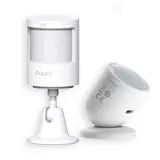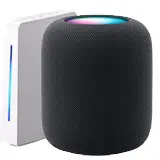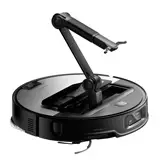We use information collected through cookies and similar technologies to improve your experience on our site, analyze how you use it and for marketing purposes.
Your privacy settings
We and our partners use information collected through cookies and similar technologies to improve your experience on our site, analyze how you use it and for marketing purposes. Because we respect your right to privacy, you can choose not to allow some types of cookies. However, blocking some types of cookies may impact your experience of the site and the services we are able to offer. In some cases, data obtained from cookies is shared with third parties for analytics or marketing reasons. You can exercise your right to opt-out of that sharing at any time by disabling cookies.
Manage Consent Preferences
Necessary
Always ON
These cookies and scripts are necessary for the website to function and cannot be switched off. They are usually only set in response to actions made by you which amount to a request for services, such as setting your privacy preferences, logging in or filling in forms. You can set your browser to block oralert you about these cookies, but some parts of the site will not then work. These cookies do not store any personally identifiable information.
Analytics
These cookies and scripts allow us to count visits and traffic sources, so we can measure and improve the performance of our site. They help us know which pages are the most and least popular and see how visitors move around the site. All information these cookies collect is aggregated and therefore anonymous. If you do not allow these cookies and scripts, we will not know when you have visited our site.
Embedded Videos
These cookies and scripts may be set through our site by external video hosting services likeYouTube or Vimeo. They may be used to deliver video content on our website. It's possible for the video provider to build a profile of your interests and show you relevant adverts on this or other websites. They do not directly store personal information, but are based on uniquely identifying your browser and internet device. If you do not allow these cookies or scripts it is possible that embedded video will not function as expected.
Google Fonts
Google Fonts is a font embedding service library. Google Fonts are stored on Google's CDN. The Google Fonts API is designed to limit the collection, storage, and use of end-user data to only what is needed to serve fonts efficiently. Use of Google Fonts API is unauthenticated. No cookies are sent by website visitors to the Google Fonts API. Requests to the Google Fonts API are made to resource-specific domains, such as fonts.googleapis.com or fonts.gstatic.com. This means your font requests are separate from and don't contain any credentials you send to google.com while using other Google services that are authenticated, such as Gmail.
Marketing
These cookies and scripts may be set through our site by our advertising partners. They may be used by those companies to build a profile of your interests and show you relevant adverts on other sites. They do not store directly personal information, but are based on uniquely identifying your browser and internet device. If you do not allow these cookies and scripts, you will experience less targeted advertising.






Home Assistant: Automation without coding
Can you imagine controlling the lights in your home by voice, or having the blinds lower themselves at dusk, or having the heating turn on automatically when you get home? All this, and much more, is possible with home automation. And best of all: you don't need to be an expert programmer to ...
This is where Home Assistant comes in. It is an open source, powerful and flexible home automation system. It allows you to connect and control a wide variety of smart devices, from light bulbs and plugs to thermostats and security systems. And, crucially, it gives you an intuitive interface to create complex automations without writing a single line of code.
What is Home Assistant and why is it so popular?
Home Assistant is a software that is installed on a computer, a Raspberry Pi or even on a cloud server. It acts as the brain of your smart home, communicating with all your devices and orchestrating the automations you define. Its popularity lies in several key factors:
Getting started with Home Assistant: installation and configuration
Installing Home Assistant is relatively simple, although the complexity varies depending on the method you choose. The most recommended option for beginners is to use the Home Assistant OS (Operating System) image, which is installed directly on a Raspberry Pi.
Installation on Raspberry Pi: the most popular option
Other installation options
In addition to Raspberry Pi, you can install Home Assistant on:
Once installed, Home Assistant will prompt you to set up your home and discover the devices on your network. This process is usually automatic, but you may need to enter your account credentials (e.g. Philips Hue, Google Nest) so that Home Assistant can communicate with your devices.
Code-free automation: Creating your first automation
The real magic of Home Assistant lies in its ability to create complex automations without writing code. The graphical interface is intuitive and easy to use, even for beginners.
Basic concepts: Triggers, conditions and actions
Before creating your first automation, it is important to understand the three basic concepts that compose it:
Practical example: Switching on a light when motion is detected at night
Let's create an automation that turns on a light when motion is detected in the hallway at night.
Congratulations! You have just created your first automation in Home Assistant. From now on, every time the motion sensor in the hallway detects movement at night, the light will turn on automatically.
Exploring the possibilities: Ideas for automating your home
The possibilities for automation with Home Assistant are virtually endless. Here are some ideas to inspire you:
Recommendations and best practices for successful automation
To make your experience with Home Assistant as satisfactory as possible, here are some recommendations and best practices:
Troubleshooting
Sometimes automations don't work as expected. Here are some troubleshooting tips:
Advanced integrations: Beyond basic automation
While Home Assistant allows you to create automations without programming, it also offers options for more advanced users who want to take their automation to the next level. Some of these options include:
Conclusion: A smart future at your fingertips
Home Assistant is a powerful and versatile tool that allows you to automate your home easily and without programming. Its broad compatibility, intuitive interface and flexibility make it the ideal choice for anyone who wants to create a smart and efficient home. Whether you want to turn on the lights with your voice, control your home's temperature automatically, or receive personalized notifications, Home Assistant gives you the tools you need to make your ideas a reality. What are you waiting for to start automating your home and enjoy a smarter future?
Share this article with your friends and family who are also interested in home automation! And feel free to comment if you have any questions or want to share your own experiences with Home Assistant.
Related Posts
How to have a smart home without a central hub
Do you dream of a smart home, full of lights that dim on their own and appliances that obey your voice? You no longer need a central hub to make it happen! Technology has advanced so far that you can create a smart ecosystem without the complexity of a centralized device. Forget about complicated and expensive configurations. Discover how to transform your home ...
How to create automated scenarios for different times of day
Can you imagine a home that adapts to you, automatically, all day long? A smart home that anticipates your needs and makes your life easier. This is possible thanks to home automation, and best of all, it's easier than you think. Home Automation: A Smart Day Home automation is a ...
How to program your home for vacations or extended absences
Your dream trip is coming, congratulations! But before you get on the plane or start the car, there's one important task: preparing your home for your absence. An unattended home can be a magnet for trouble, from petty theft to costly breakdowns. Don't worry, it doesn't have to be complicated. Here's a step-by-step guide to ...
Nighttime automation: lights, alarms, and comfort
Can you imagine coming home after a long day and having the lights come on automatically? Or waking up gently with a simulation of the sunrise? Night automation is much more than just technology. It's transforming your home into a smart space that takes care of you, your safety and your comfort while you sleep.